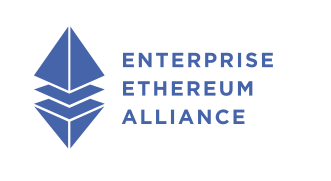tom lions
In our Ethereum Business Readiness Report published last June, we highlighted the continued maturation of the public Ethereum ecosystem as a business platform. Recent events show that this trend is continuing.
“Enterprise blockchain is dead, this is the long-lived blockchain for enterprises.”
Don Tapscott, renowned blockchain influencer and founder of the Blockchain Institute (EEA member), said this at a dinner held in Davos during World Economic Forum week in January:
Tapscott’s slogan aptly reflects a sentiment we’ve been hearing in the EEA for some time. There has been a significant movement in the industry toward open, public blockchains.
In our Ethereum Business Readiness Report published last June, we highlighted that the Ethereum world’s move away from a private consortium-based blockchain model has been driven by the continued evolution of the mainnet and the continued growth of the Ethereum ecosystem.
In particular, the emergence of layer 2 solutions (L2) has helped address the performance, privacy, and security issues that previously required private blockchains for business purposes. We also concluded that while all the pieces are ready for business use of public Ethereum, they are not yet fully aligned.
Since the report was published, advancements in public blockchain technology have continued and the pieces are increasingly coming together. I would like to highlight four key developments that demonstrate the growing ability of public Ethereum to support decentralized business models.
- Last year’s cryptocurrency market crash put DeFi protocols to the test and showed remarkable resilience. These achievements not only highlighted the robustness of blockchain-based DeFi models, but also strengthened their potential in the decentralized commerce ecosystem.
- The merge showed that Ethereum is well-governed and technically strong. Ethereum Merge has significantly improved the sustainability and security of the mainnet. It also demonstrated that Ethereum is fully capable of developing and maintaining complex core infrastructure.
- The emergence of zkEVM indicates that advanced privacy technologies are coming into their own. Zero-knowledge technology has long been known as a means of providing true privacy to transparent public blockchains. This year we are starting to see large-scale implementations of this technology with the introduction of several Zero-Knowledge Ethereum Virtual Machines (zkEVM).
- Regulatory certainty continues to be provided, even if piecemeal. The recent introduction of the MiCa regulation in the EU establishes a clear regulatory framework for digital assets and blockchain technology in one of the most important regions in the world. These developments remove significant barriers for businesses considering blockchain adoption in Europe and bring Europe on par with many other jurisdictions around the world. In other regions, especially the United States, clarity remains elusive. But the trend seems clear.
Private networks are becoming intranets in the blockchain era.
This evolution toward public blockchains does not necessarily mean that private blockchain networks are dead. In fact, there is always room for private networks in certain business use cases.
However, our approach to private or invite-only settings is changing. Rather than relying on isolated, purpose-built blockchains operated by closed consortia, these private networks are implemented as subnets running on a combination of decentralized applications (dApps) or Ethereum Layer 2 or Layer 3 solutions.
By connecting these networks to the public mainnet at various levels, they become part of the larger Ethereum ecosystem. This approach is strikingly similar to how the Internet has evolved over time.
Just as private intranets and permissioned websites can coexist and interoperate with the open public internet, private blockchain networks will continue to serve specific purposes while benefiting from being connected to the broader Ethereum ecosystem in terms of technology and community. .
These developments are paving the way for increasingly decentralized business models. Just as we have witnessed the rise of decentralized finance (DeFi), we can expect similar movements towards decentralized supply chains, healthcare, manufacturing, and many other sectors.
In this way, we continue to take steps toward achieving Ethereum’s initial mission to build an open source, publicly available, universal, decentralized transaction infrastructure for the planet.

